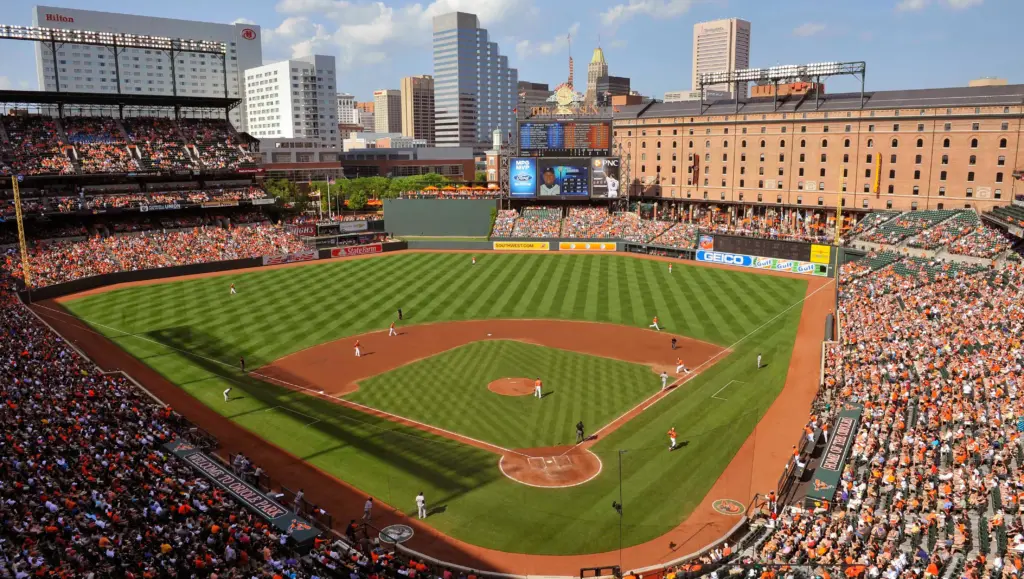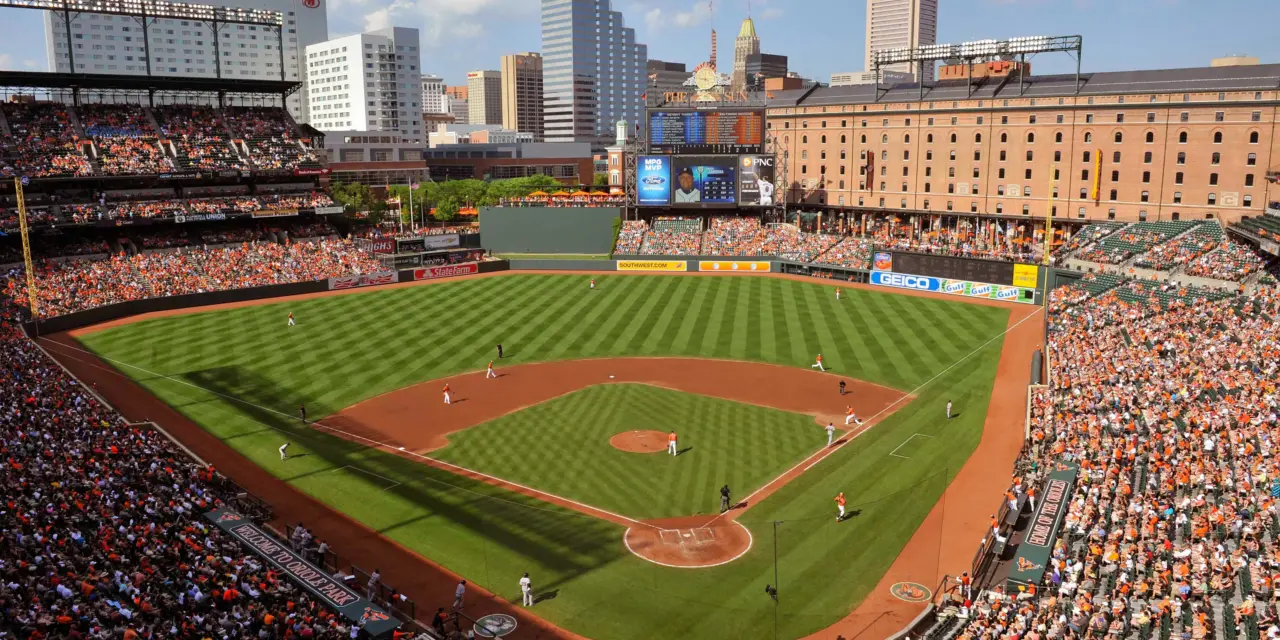The Baltimore Orioles made news earlier in the week when they suspended broadcaster Kevin Brown for saying on-air that the Birds had not fared well recently against the Tampa Bay Rays at Tropicana Field. Many play-by-play announcers from other teams verbally flogged Orioles management for this decision, including the Mets’ Gary Cohen.
To make this story even more bizarre, Brown was asked to fill in on radio since his suspension because one of the Orioles’ radio voices did not wear team apparel to the ballpark, which apparently is a requirement. Yes, this is on radio.
The Mets recently were swept by the high-flying Orioles in a three-game series at Camden Yards, which is the first of the “retro ballparks.” Camden Yards opened in 1992 and is regarded as one of the best venues in all of Major League Baseball. I was at the series, and the park has not lost any of its charm in the thirty-one years since its turnstiles became active for the first time.
However, despite their pleasantly-surprising season that finds them in first place with less than one-third of the schedule left to play, the Orioles keep making news off the field. In addition to the broadcast booth fiasco, the Angelos Family, owners of the ball club, are not happy with the current situation at Camden Yards, or more specifically, around Camden Yards.

Ken Rosenthal provides details in a recent article in The Athletic. The Orioles have yet to sign an extension to their lease on Camden Yards, which expires on December 31 of this year. There does not appear to be any possibility of the Orioles leaving Baltimore, as Commissioner Rob Manfred has stated (rather boldly) that as long as he is commissioner, Baltimore will have its team. The issue is that the Angelos family (Peter Angelos has been incapacitated with an illness for five years) is seeking $600 million from the state of Maryland for ballpark improvements and additional funding to help build up the area around the stadium.
The first part seems locked, and the team will get the $600 million. The additional funding to clean up the area so food, beverage, and merchandise establishments can open is much more in question. From the cited article:
“I would like to express my frustration over the Orioles’ lease situation,” William Cole (from the Maryland Stadium Authority) said, as first reported by The (Baltimore) Sun. “The Orioles promised a resolution by the All-Star break. That deadline has now passed … I remain perplexed why a lease hasn’t been executed already.”
Not unexpectedly, Governor Wes Moore (D) of Maryland had the following to say about committing additional funding to the area:
“What comes next for the Camden Yards campus must serve our entire community and the city as a whole,” the statement said. “From the ballpark and surrounding neighborhoods to Harborplace and the Inner Harbor, we are committed to making the downtown corridor a premier destination that benefits Baltimore and Maryland residents year-round.”
Teams receiving public money for ballparks is common, it happens virtually without exception. Now, team owners are pushing the idea even further to include build-up of the surrounding area, to make going to games even more attractive to paying customers. We have seen it with Mets’ owner Steve Cohen, who is committed to improving the area around Citi Field, possibly to include a casino (the state’s and city’s financial contributions are to be determined, but approval is needed to use the land for something other than parkland).
Going to ballgames is becoming more of a destination than a single event. Chicago, Boston, San Diego, and Atlanta are examples of stadium areas that offer multiple entertainment options. The Orioles want it (and need some enhancement to the area), the Mets want it, and as is typically the case, the answer will come down to approvals, financial, legislative, or both.
For Mets fans, the Camden Yards experience last weekend would have been better with a win or two, regardless of whether or not there are places to eat and drink in the area. But baseball is a business, and drawing customers to the area is becoming more and more important. Bars and restaurants can do that, but a winning team does it even more effectively.
















